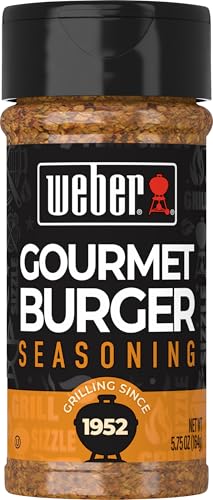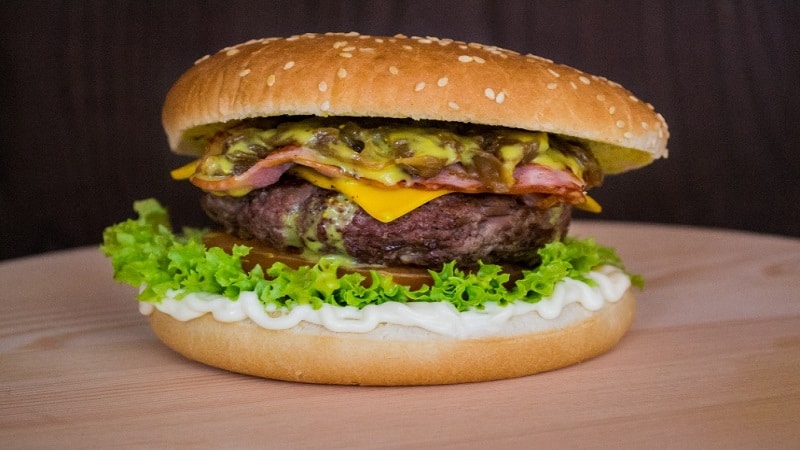Key Takeaways
- Fierce Rivalry: The 1980s saw McDonald’s and Burger King engage in an intense competition, leading to innovative marketing strategies and memorable advertising campaigns that captivated consumers.
- Menu Innovation: Both chains introduced iconic menu items (e.g., McDonald’s Big Mac and Burger King’s Whopper), becoming benchmarks for quality and creativity in the fast-food industry.
- McDonald’s Marketing Strategy: McDonald’s utilized engaging jingles, character branding (like Ronald McDonald), and promotional tie-ins (such as Happy Meal toys) to enhance customer loyalty and create a family-friendly image.
- Burger King’s Unique Approach: Burger King’s “Have It Your Way” campaign encouraged customization and individuality, setting them apart from McDonald’s standardized offerings and resonating with evolving consumer preferences.
- Cultural Impact: The burger wars influenced American culture, transforming fast food into a communal dining experience while fostering consumer expectations for variety and customization.
- Legacy of Innovation: The competitive landscape of the ’80s prompted a surge in culinary creativity, inspiring both fast-food chains and home cooks to explore diverse flavors and unique burger creations.
The 1980s marked a sizzling showdown in the fast-food world, as McDonald’s and Burger King went head-to-head in a battle for burger supremacy. It wasn’t just about who had the tastiest fries or the juiciest patties; it was a full-blown marketing war that captivated millions. I remember the catchy jingles and fierce commercials that made choosing a side feel almost like a rite of passage.
As these two giants clashed, they introduced innovative menu items and unforgettable ad campaigns. From the iconic Big Mac to the Whopper, each brand fought tooth and nail to win over hungry customers. Join me as I take a nostalgic dive into the Burger Wars of the ’80s and explore how these fast-food titans shaped our dining experiences and pop culture.
Overview of The 1980s Burger Wars
The 1980s marked a golden era of fierce rivalry between McDonald’s and Burger King. This intense competition sparked a whirlwind of creative marketing strategies and unforgettable advertising campaigns. Each chain aimed to capture the hearts and appetites of burger lovers across America. Catchy jingles and memorable commercials became part of the cultural landscape, turning fast food into not just a meal, but a shared experience.
Both chains introduced innovative menu items, with McDonald’s pushing the Big Mac and Burger King promoting the Whopper. These iconic offerings not only defined their brands but also set the standard for burger excellence. The creativity didn’t stop at the burgers; promotional tie-ins and seasonal items added excitement and variety, enticing customers to explore new flavors.
As I reminisce about that era, I recognize how the Burger Wars influenced not just dining choices but also pop culture. These fast-food giants engaged in a playful battle for dominance, compelling me as a burger enthusiast to experiment with my flavors and creations. The spirited competition between McDonald’s and Burger King truly shaped how we view and enjoy burgers today.
McDonald’s Strategy
McDonald’s adopted a dynamic strategy during the 1980s to outpace Burger King. Focused on innovation and brand identity, McDonald’s established itself as a leader in the fast-food sector.
Menu Innovations
I often find inspiration in McDonald’s menu innovations, which transformed the burger scene. The introduction of the Chicken McNuggets in 1983 showcased McDonald’s ability to expand beyond traditional beef options. They also enhanced their signature Big Mac by incorporating flame-grilled patties and special sauce, setting a blueprint for other chains. Seasonal items, like the McDLT, encouraged experimentation and engaged customers with limited-time offers, sparking curiosity and excitement around their menu.
Marketing Campaigns
McDonald’s marketing campaigns during this era were truly unforgettable. Renowned jingles, such as “You Deserve a Break Today,” captured attention and resonated with audiences, making McDonald’s synonymous with fast food. They effectively used characters like Ronald McDonald to create a friendly, family-oriented image. Plus, large promotional tie-ins, like toys with Happy Meals, strengthened brand loyalty among children and families. These strategies crafted a fun dining experience that kept customers returning for more.
Burger King’s Response
The 1980s saw Burger King stepping up its game to compete with McDonald’s fiercely. The fast-food chain quickly adapted its strategy to capture attention and market share.
Signature Products
Burger King introduced a series of signature products during this era, focusing on flame-grilling techniques that differentiated them from McDonald’s frying methods. The Whopper, their flagship burger, received updates and promotions to reinforce its status. Unique additions, such as the Angry Whopper featuring jalapeños and spicy sauce, targeted customers craving bold flavors. The introduction of Chicken Sandwiches and Fish Sandwiches broadened their menu, attracting a wider audience while capitalizing on that health-conscious trend.
Advertising Tactics
Burger King’s advertisements creatively emphasized their flame-grilling process through catchy slogans and memorable campaigns. Pioneering the “Have It Your Way” campaign, they empowered customers to customize their burgers, a direct challenge to McDonald’s more standardized approach. Iconic commercials, sometimes featuring celebrity endorsements, aimed to reinforce their quirky and fun brand persona. Marketing stunts, including the introduction of the “Burger King” character, generated buzz, capturing attention with humor and relatability that resonated with consumers. These marketing tactics kept Burger King competitive and relevant, ensuring they remained a key player in the fast-food market.
Impact on Fast Food Industry
The burger wars of the 1980s not only changed how companies marketed their products but also reshaped consumer expectations and preferences in the fast food industry.
Consumer Behavior Changes
Consumer behavior shifted dramatically as McDonald’s and Burger King battled for the top spot. Fast food establishments became more than just places to grab a quick meal; they evolved into family-friendly destinations. Customers sought variety and customization, pushing chains to innovate. The introduction of meal customization at Burger King with its “Have It Your Way” campaign catered to a growing desire for personalized dining experiences. This demand led to expanded menus, with options catering to various tastes and dietary preferences. Consequently, families flocked to fast food joints, knowing they could find meals that suited everyone’s cravings.
Competitive Landscape
The competitive landscape transformed significantly during this decade. McDonald’s and Burger King not only focused on attracting customers but also influenced other chains to step up their game. New contenders emerged, raising the quality and variety of fast food offerings. The rivalry led to aggressive marketing strategies, with companies introducing catchy jingles, eye-catching commercials, and unique promotions. These marketing tactics were essential for standing out in a crowded market. As a result, the burger industry witnessed a surge in new concepts, flavors, and dining experiences that set a higher standard for the entire fast food sector.
Cultural Significance
The 1980s burger wars between McDonald’s and Burger King transformed not just fast food, but shaped cultural trends that echoed throughout the decade and beyond. This competition inspired a societal shift towards convenience dining, making fast food a staple in American culture. I remember it vividly; the anticipation of new menu items became a part of our shared experience, with families and friends gathering to enjoy the latest burger concoctions.
Memorable advertising campaigns like McDonald’s catchy jingles and Burger King’s “Have It Your Way” resonated with consumers, creating a sense of belonging. These brands tapped into the family dynamic with their strategic marketing, fostering loyalty that extended beyond mere food choices. As I experimented with creating my own burgers, I often drew inspiration from these bold marketing tactics, learning how flavors and presentations could make an impact.
The era saw a rise in burger customization as chains fought over consumer preferences. McDonald’s Chicken McNuggets and the enhancements to the Big Mac showcased their commitment to innovation. Burger King’s emphasis on flame-grilling and customization encouraged patrons to indulge their cravings in personalized ways. This trend of creating unique burgers became a phenomenon that inspired chefs and homecooks, including myself, to experiment beyond the traditional burger template.
This spirit of creativity sparked by the burger wars led to culinary freedom, encouraging everyone to explore flavors and ingredients previously unseen in fast food. The concept of unique toppings and diverse flavor profiles slowly embedded itself into our dining vocabularies. Even now, as I craft burgers for family gatherings, I experiment with bold ingredients, from spicy jalapeños to tangy barbecue sauces, embracing the adventurous spirit that defined a generation.
Overall, the cultural significance of the burger wars continues to influence how I create and share my passion for burgers. The rivalry didn’t just shape the fast-food landscape; it inspired a movement that encourages culinary exploration, bringing friends and family together for a shared love of unique flavors and experiences.
Conclusion
The burger wars of the 1980s were more than just a battle between two fast-food giants. They sparked a cultural shift that changed how we think about dining and flavors. I can’t help but smile when I remember those catchy jingles and the excitement of trying new menu items.
Both McDonald’s and Burger King pushed each other to innovate and adapt, creating a legacy that still influences our food choices today. The creativity and competition not only shaped our taste buds but also brought families and friends together over delicious meals. It’s amazing to see how that era continues to inspire culinary adventures and the joy of sharing a great burger.









